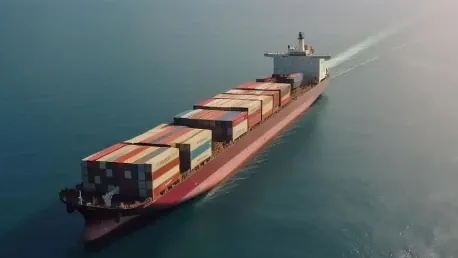The Viking Energy, a supply vessel developed through a collaborative effort between Equinor, Eidesvik Offshore, and Wärtsilä, is poised to become a cornerstone in the future of ammonia-powered shipping. With the ambitious goal of achieving low-emission operations by 2026, this initiative represents a significant milestone in maritime environmental technology. Equinor, a major player in the energy sector, has targeted cutting emissions from its Norwegian operations by 50% by 2030. Setting Viking Energy as the world’s first ammonia-fueled supply vessel demonstrates this commitment. They aim to reduce the vessel’s emissions by at least 70%, a notable step towards sustainability.
Ørjan Kvelvane, Equinor’s senior vice president, has been vocal about the company’s confidence in ammonia as a key fuel for supply vessels, aligning with global sustainability goals. The groundbreaking conversion project, led by Eidesvik Offshore and Wärtsilä, involves installing a new engine, a cutting-edge fuel gas supply system, and advanced exhaust after-treatment technology. This pioneering effort, supported by significant funding from Equinor and a €5 million grant from the EU Horizon Europe program, emphasizes the importance of sustained investment in innovative maritime technologies.
Equinor’s Commitment to Maritime Sustainability
Equinor’s approach to integrating sustainable practices within the maritime industry underscores its pledge to maritime sustainability. This project is not an isolated event; it continues a legacy of firsts for the Viking Energy, which was previously recognized as the first LNG-powered supply vessel and earned DNV’s “Battery Power” certification. By advancing ammonia as a viable maritime fuel, Equinor seeks to influence the regulatory frameworks essential for broad adoption. The company currently maintains a fleet of 25-35 supply vessels on the Norwegian Continental Shelf, out of a total of around 45 offshore vessels, illustrating its extensive operational capacity.
Approximately 85% of the shipping companies operating for Equinor are Norwegian, employing about 1,300 Norwegian crew members. This demonstrates Equinor’s reliance on Norwegian maritime expertise and its significant contribution to local employment. The Norwegian government is responding favorably to such industry initiatives, preparing to introduce low-emission standards for supply vessels by 2025, with zero-emission requirements for new vessels by 2029. However, the regulatory specifications remain under development. Equinor’s actions indicate that it is not waiting for legislation but is instead setting the standard for sustainability in the industry.
Challenges and Future Outlook
Despite the ambitious goals and substantial investments, Equinor and its partners face notable challenges. Ørjan Kvelvane has acknowledged the aging offshore fleet and the high costs associated with developing and implementing new maritime technologies. These challenges underscore the uncertainty that still surrounds the adoption of innovative solutions such as ammonia as a primary fuel. Nonetheless, the strategic partnerships and funding backing this initiative highlight the belief that collaborative efforts are essential for achieving emission reduction targets. Scaling advanced technologies will require ongoing cooperation with regulatory authorities and technology suppliers.
Looking ahead, Equinor’s exploration of the market for additional ammonia-fueled supply vessels signals a broader commitment to integrating low-emission technology across its marine operations. Beyond reducing CO2 emissions, this initiative could catalyze the development of an effective value chain for ammonia bunkering, enhancing its feasibility as a fuel. The Viking Energy project not only aims to substantially reduce emissions but also holds potential for influencing global environmental regulations and setting new industry standards. Such efforts align with the broader environmental goals of reducing maritime emissions and advancing sustainable practices in the shipping industry.
Conclusion: A Future Role Model
The Viking Energy, a supply vessel developed collaboratively by Equinor, Eidesvik Offshore, and Wärtsilä, is set to become a pivotal player in ammonia-powered shipping. Aimed at achieving low-emission operations by 2026, this project represents a significant leap in maritime environmental technology. Equinor, a leading energy company, plans to slash emissions from its Norwegian operations by 50% by 2030. By designating Viking Energy as the world’s first ammonia-fueled supply vessel, Equinor demonstrates its strong commitment to sustainability, aiming to cut the vessel’s emissions by at least 70%.
Ørjan Kvelvane, Equinor’s senior vice president, has expressed faith in ammonia as a crucial fuel for supply vessels, aligning with global sustainability objectives. The groundbreaking conversion project, spearheaded by Eidesvik Offshore and Wärtsilä, involves installing a new engine, an advanced fuel gas supply system, and state-of-the-art exhaust after-treatment technology. This innovative venture, heavily funded by Equinor and supported by a €5 million grant from the EU Horizon Europe program, underscores the essential need for continued investment in advanced maritime technologies.









